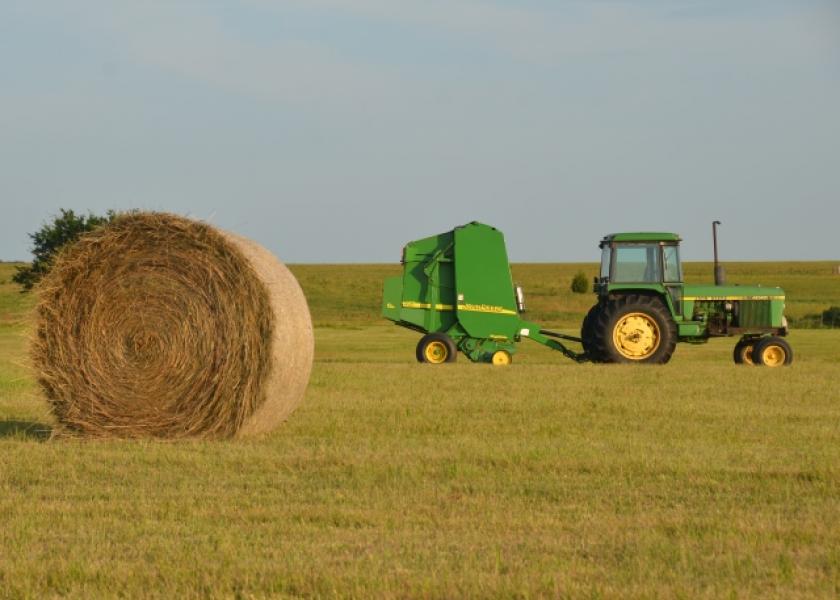Hay Storage-Minimizing Loss

Traveling throughout Oklahoma I often observe how many round bales we produce and the numerous ways they can be stored prior to feeding time. Since the large round bale was introduced, it has become the most common form of baling hay. This is primarily due to low-labor demand and fewer storage requirements than the traditional small square bale.
Most round bales are typically stored outside and unprotected because of their ability to shed moisture. It’s not always easy to control weather related losses, but producers can minimize storage losses. Dry matter loss of hay is generally a function of moisture, temperature, and time.
Research has shown storing round bales outside and unprotected can be much greater than producers realize. Losses have can range from 5-40% due to bale quality, storage conditions, and length of storage. Bale shape and density can aid in minimizing loss. A good shaped and dense bale with a good core will decrease “squatting bales” and rejected hay while aiding in transporting well shaped bales.
Creating a good “thatch” layer will shed water decreasing the amount absorbed in the bale. Wrapping bales with net vs. twine impacts dry matter loss. Net wrapped bales maintain the bale integrity and reduces losses compared to twine through the storage period.
Minimize dry matter loss by storing your hay on the best well drained surface available to reduce moisture absorption into the underside of the bales. As much as 12 inches of the bottom of the bale can be lost through the wicking action.
Elevating bales from contact with the soil surface is optimum but not necessarily practical in most operations. Storage sites free from sources of shade (tree lines, along barns, buildings, etc) allows for good airflow and sun exposure to reduce the amount of spoilage.
Orientation of the round bales in the storage site is another important consideration in minimizing loss. Bales should be stored in rows, butted end-to-end, and in a north/south direction with a southern exposure if possible. This orientation at least 3 ft. between rows will provide good sunlight and air flow, which allows for a faster drying time following a rain or snow event. It will also allow for easier vegetation control between row if needed, to reduce losses.
“Mushroom Stacking” and “Pyramid Stacking” are other common storage practices which should be avoided. Each of these practices lead to large dry matter loss due to increased water infiltration, reduced airflow within the stack, and limited exposure to sunlight.
Loss of round bales stored outside and unprotected can be reduced by baling smart, with a good dense bale, good thatch layer, and net wrapping. In addition to storing bales in a well-drained site, with a slight slope, north/south direction with sun exposure.
References:
Round Bale Hay Storage fact sheet https://extension.okstate.edu/fact-sheets/print-publications/bae/round-bale-hay-storage-bae-1716.pdf
Shinners, K.J., B.M. Huenink, R.E. Muck, and K.A. Albrecht. 2009. Storage Characteristics of Large Round Alfalfa Bales: Dry Hay. American Society of Agricultural and Biological Engineers. Vol. 52(2): 409-418.
The Rancher’s Thursday Lunchtime webinar series by Dr. Kevin Shinners https://youtu.be/yhyDl2Uz2CM http://beefextension.okstate.edu/files/BaleStorageOkSUPDF.pdf







